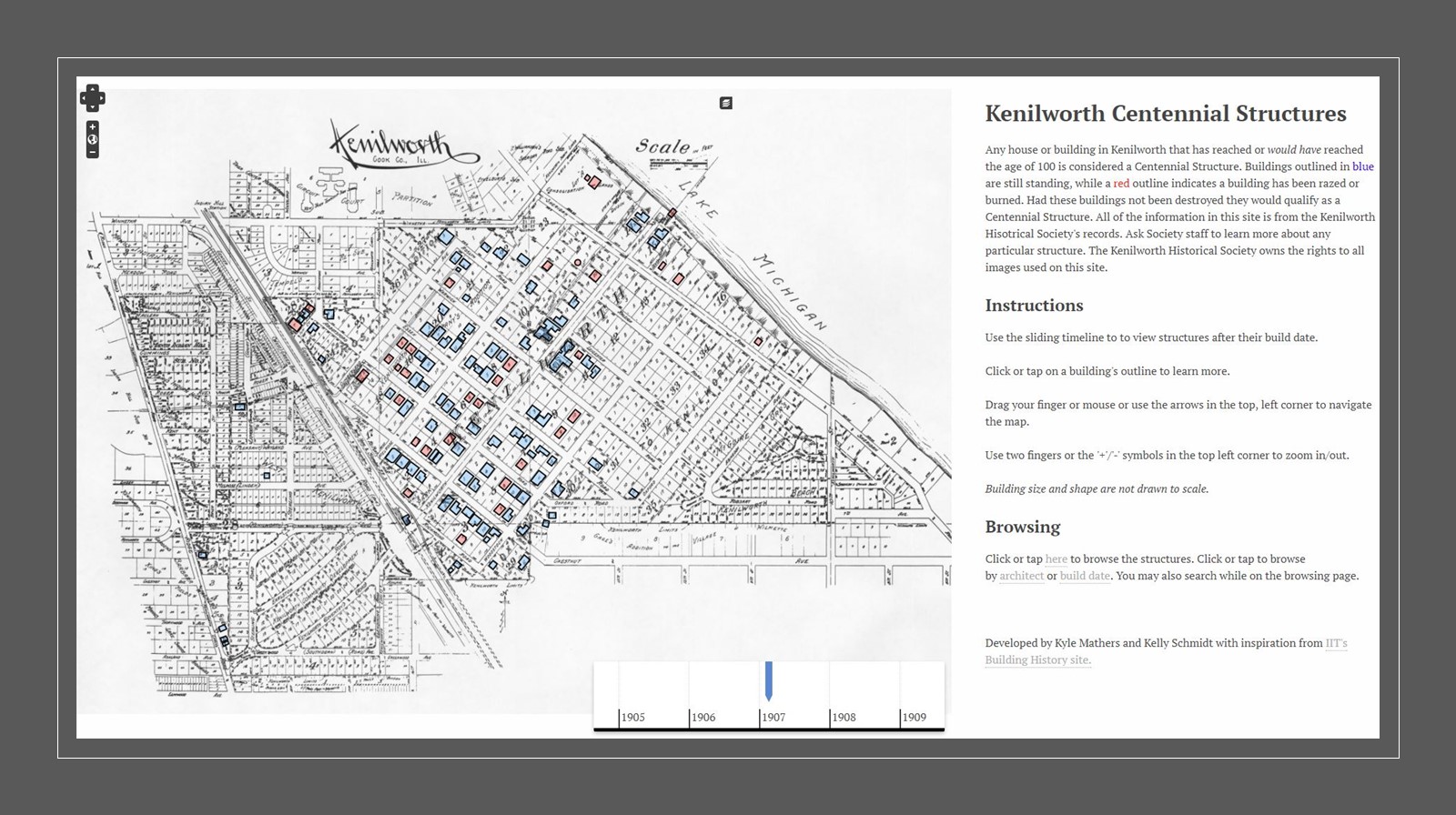archive
Loyola Alumnus and Graduate Student Create New Digital Exhibit

Kyle Mathers, a graduate of the Loyola Public History M.A. Program, recently completed a new digital exhibit, Kenilworth Centennial Structures, for the Kenilworth Historical Society, located in a suburb of Chicago situated on the North Shore. This exhibit is accessible online and will appear as an interactive feature on a tablet in the Kenilworth Historical Society's galleries starting February 11. Kyle worked with current Loyola Public History and U.S. History graduate student Kelly Schmidt to construct the site using the Omeka online exhibit platform.
Kyle writes of his experience:
"This exhibit offers an introduction to Kenilworth’s rich architectural history. Kenilworth Centennial Structures is a digital exhibition covering all the buildings in the village of Kenilworth that are over 100 years old. The site also includes buildings that would be 100 years old had they not been razed. I wanted to use this exhibit to preserve the memory of Kenilworth’s lost buildings. Many houses designed by noted architects and important buildings from the village’s early history have been torn down. Including those structures on this site will hopefully help raise awareness of the ongoing preservation efforts in the village. The idea to include razed structures stemmed from my historic preservation studies at Loyola. While the physical structure had been demolished and replaced this exhibit can preserve the memory and impact of those lost buildings.
Prior to this digital site the museum had a static exhibit in their main gallery. It was comprised of photos and small labels containing basic information about each home and did not include razed buildings or civic structures. The display was outdated, difficult to update as houses turned 100, and took up a lot of space in the museum’s only gallery. This new exhibit solves all the previous display’s issues. Given the digital nature of the exhibit it is easy to update and highly accessible. The physical display in the museum is much smaller and easily moved around the museum to accommodate changing exhibitions.
Currently the site only contains basic information about each building, but I would like to add more detail and descriptions to significant buildings and homes and possibly expand the site to include information about some of Kenilworth’s most influential architects.
I started this project when I was the curator at the Kenilworth Historical Society. When I moved on to the First Division Museum I still wanted to finish this exhibit. I stayed on as a consultant and designed and built the physical display and uploaded the content to the Omeka site. The project has had its ups and downs, but I have greatly enjoyed working on it. The exhibit is officially open on Sunday February 11th."
The Centennial Structures project emphasizes the collaborative nature of public history practice. Kyle and Kelly learned how to use Omeka in their Public History New Media class at Loyola. Using this knowledge, Kyle developed the concept for the Centennial Structures site and approached Kelly to execute his vision for the site layout. They chose to use the Neatline plugin for Omeka to create an interactive map for visitors to explore. Kyle contributed the content and design plan and Kelly modified the site's coding to function according to Kyle's design. "I really enjoyed being a part of this project because it helped me advance skills I had gained in my Public History and Digital Humanities Courses at Loyola," Kelly says. "It was a great asset to my professional development to learn how to design an interactive exhibit using Neatline."
